Course Language: English

MASTER THE HARMONY TECHNIQUES BEHIND MODERN FILM SCORES
COURSE CONTENT:
1. Create emotional impact through chord progressions, chromatic mediants, and modal interchange - the building blocks of modern film scoring
2. Apply advanced modulation techniques and voice leading methods used in contemporary film music
.AI SUPPORT:
1. Access an AI teaching assistant trained on 60+ hours of harmony instruction, providing instant answers to your technical questions
2. Get precise references to course examples and detailed explanations of harmony concepts whenever you need them
TRY IT RISK FREE - 7 DAYS MONEY BACK GUARANTEE

- WHAT'S IN THE COURSE? -
(Click ▶️ to Watch)

MASTER THE HARMONY TECHNIQUES BEHIND MODERN FILM SCORES
- WHAT'S IN THE COURSE? -
(Click ▶️ to Play video)
TRY IT RISK FREE - 7 DAYS MONEY BACK GUARANTEE

COURSE CONTENT:
1. Create emotional impact through chord progressions, chromatic mediants, and modal interchange - the building blocks of modern film scoring
2. Apply advanced modulation techniques and voice leading methods used in contemporary film music
.AI SUPPORT:
1. Access an AI teaching assistant trained on 60+ hours of harmony instruction, providing instant answers to your technical questions
2. Get precise references to course examples and detailed explanations of harmony concepts whenever you need them
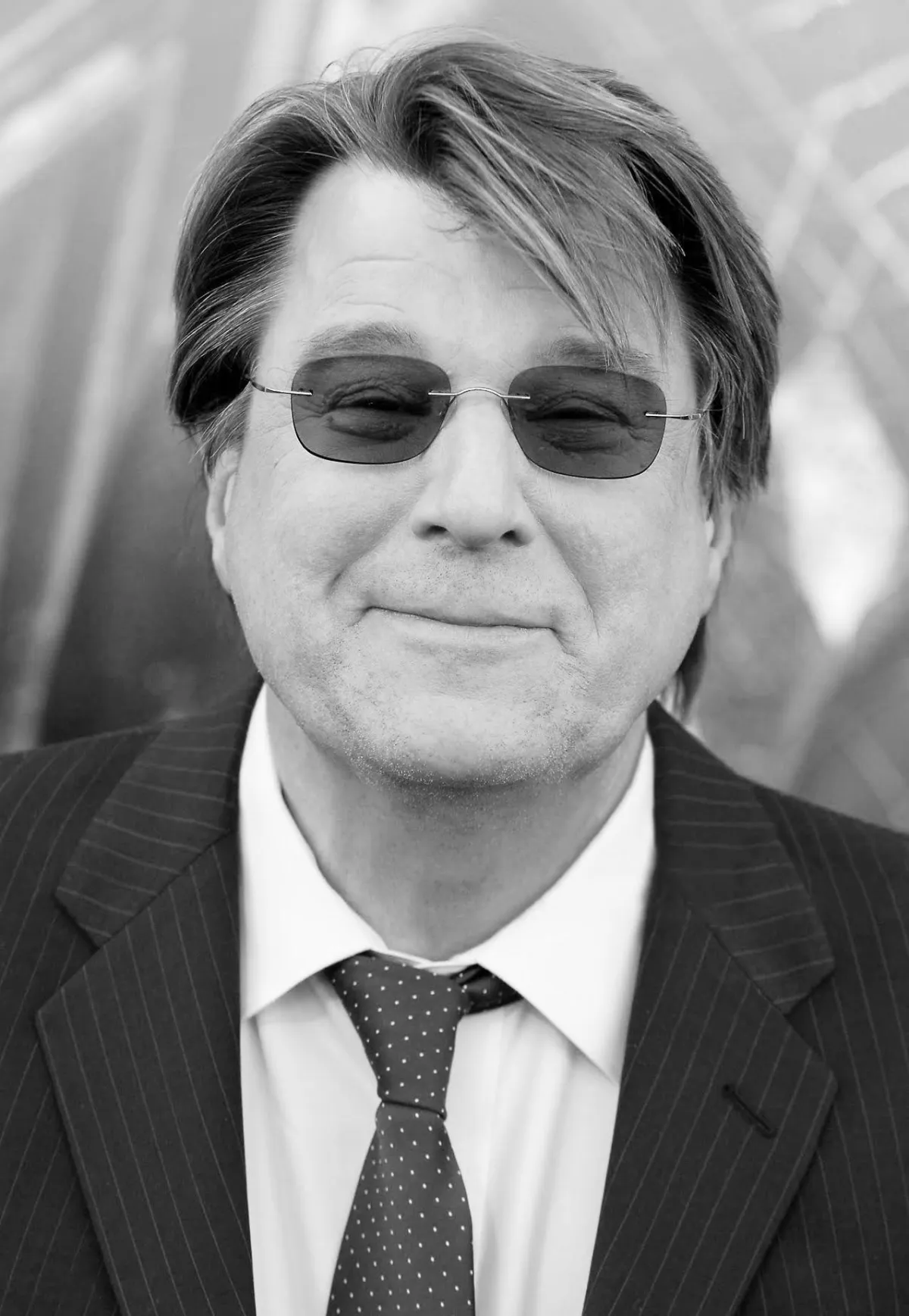
Christopher Young - Composer: Spider Man
Marc Jovani is the real deal. His courses are a hit! This course is exactly what you need to get started as a composer!
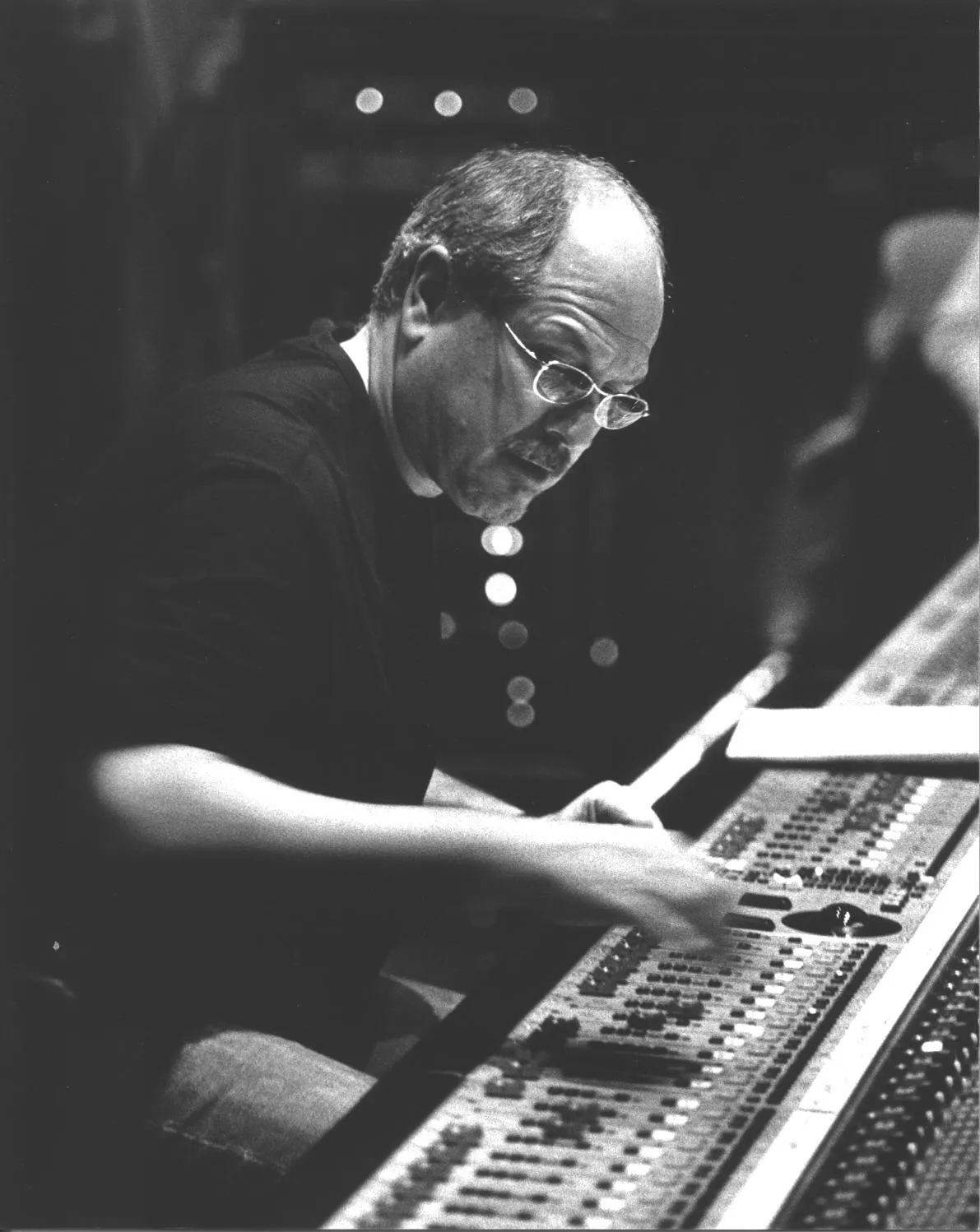
Dennis Sands - Mixing Engineer: Avengers
Marc's courses are excellent. They provide both a foundation and advanced techniques. If you're getting started, this course is perfect for you!
CHOOSE THE VERSION THAT WORKS BEST FOR YOU
Modern Harmony Editions Comparison
| FEATURES |
Modern Harmony
CLASSIC*
Videos + Assignment Revisions
|
Modern Harmony
SELF-CONTAINED
Just Videos
|
Modern Harmony
Videos + Q&A Replays + AI Teacher Assistant
|
|---|---|---|---|
| Price | $997 |
$399 |
$499 |
| Assignment Revisions | ✓ | ✗ | ✗ |
|
▶
FOUNDATIONAL CONCEPTS
(click to collapse)
|
|||
| Essential Harmony Building Blocks | ✓ | ✓ | ✓ |
| Chord Construction & Development | ✓ | ✓ | ✓ |
| Functional Harmony Principles | ✓ | ✓ | ✓ |
| Practical Keyboard Application | ✓ | ✓ | ✓ |
| From Basic to Advanced Progressions | ✓ | ✓ | ✓ |
|
▶
INTERMEDIATE HARMONY
(click to collapse)
|
|||
| Secondary Dominants & Applied Chords | ✓ | ✓ | ✓ |
| Modal Interchange & Borrowed Chords | ✓ | ✓ | ✓ |
| Extended Harmony & Upper Extensions | ✓ | ✓ | ✓ |
| Complex Modulation Techniques | ✓ | ✓ | ✓ |
| Harmonic Analysis Methods | ✓ | ✓ | ✓ |
|
▶
ADVANCED CONCEPTS
(click to collapse)
|
|||
| Chromatic Mediants & Third Relations | ✓ | ✓ | ✓ |
| Non-Functional Harmony Applications | ✓ | ✓ | ✓ |
| Advanced Cadential Progressions | ✓ | ✓ | ✓ |
| Modal Harmony Systems | ✓ | ✓ | ✓ |
| Symmetrical Scale Harmonization | ✓ | ✓ | ✓ |
|
▶
PROFESSIONAL TECHNIQUES
(click to collapse)
|
|||
| Contemporary Voicing Methods | ✓ | ✓ | ✓ |
| Vertical Sonority Construction | ✓ | ✓ | ✓ |
| Advanced Progression Building | ✓ | ✓ | ✓ |
| Functional vs. Color Harmony | ✓ | ✓ | ✓ |
| Modern Scoring Applications | ✓ | ✓ | ✓ |
|
▶
|
|||
| INTELLIGENT NAVIGATION | |||
|
Precise Content Location
Instantly find exact timestamps and lessons where specific
concepts are taught
|
✗ | ✗ | ✓ |
|
Cross-Reference System
Connect related concepts across different modules and live classes
|
✗ | ✗ | ✓ |
|
Smart Search Capability
Find exactly what you need across 60+ hours of expert teaching
|
✗ | ✗ | ✓ |
| ADVANCED LEARNING SUPPORT | |||
|
Technical Concept Analysis
Get detailed explanations of complex harmony concepts with
practical examples
|
✗ | ✗ | ✓ |
|
Real-Time Problem Solving
Ask specific questions about your compositions and get targeted
solutions
|
✗ | ✗ | ✓ |
|
Style-Specific Guidance
Receive custom harmony suggestions for different film music styles
|
✗ | ✗ | ✓ |
| ENHANCED FEATURES | |||
|
60+ Hours Indexed Content
Access a vast knowledge base of live classes and course material
|
✗ | ✗ | ✓ |
|
Direct Example Access
Get immediate references to real musical examples from the course
|
✗ | ✗ | ✓ |
|
Contextual Learning Paths
Receive personalized suggestions for your learning progression
|
✗ | ✗ | ✓ |
This version (Modern Harmony Classic*) is now discontinued. Assignment revisions and mentoring are now offered inside Music Composition Mentorship.

Jose Cancela - 5 Time Emmy Award Winning Composer
What Marc is creating with Cinematic Composing and all its courses was very much needed in this industry. Everything that you need to know to get started and beyond is right here!
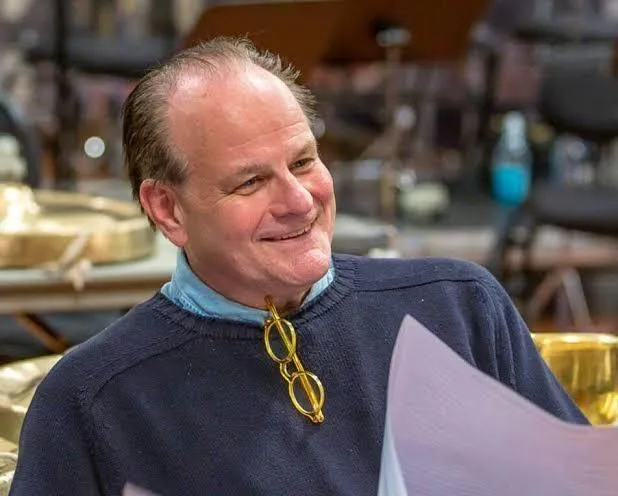
Conrad Pope - Orchestrator: John Williams (Star Wars)
Marc is opening doors and giving access to the best knowledge to so many people who want to get started as composers. The content you find here is hard to find anywhere else. Keep it up!
AI TEACHER ASSISTANT
How does the tool work? Step by Step.
WHAT'S INSIDE
MODERN HARMONY?
With today's incredible sample libraries and production tools, most film composers can create professional-sounding tracks 🎵
But creating those spine-tingling emotional moments that great film scores are remembered for... that takes something more 🎬
How are you going to create those powerful emotional moments that stick with your audience? 🤔
In this course, I'll show you how to master the harmonic techniques that gave us the magic of John Williams' E.T., the emotion of Hans Zimmer's Interstellar, and the drama of Howard Shore's Lord of the Rings—while developing YOUR OWN unique voice.
✔ Foundation: Basic Concepts—We’ll start with the building blocks used in every great score—from the haunting minor seconds of Jaws to the soaring major sevenths of Up. Discover how John Williams uses simple triads to create the noble Force theme, and how Hans Zimmer transforms basic seventh chords into the powerful Inception score. Goal: Understand the building blocks of modern harmony and start speaking the language of emotion
✔ Power Tools: Advanced Harmony—From modal interchange for character transformations to mediant relationships for plot twists, learn how secondary dominants create anticipation in chase scenes, how modal interchange deepens emotional moments, and how mediants craft those magical key changes in fantasy sequences. Goal: Master the techniques that will make your music stand out and move your audience
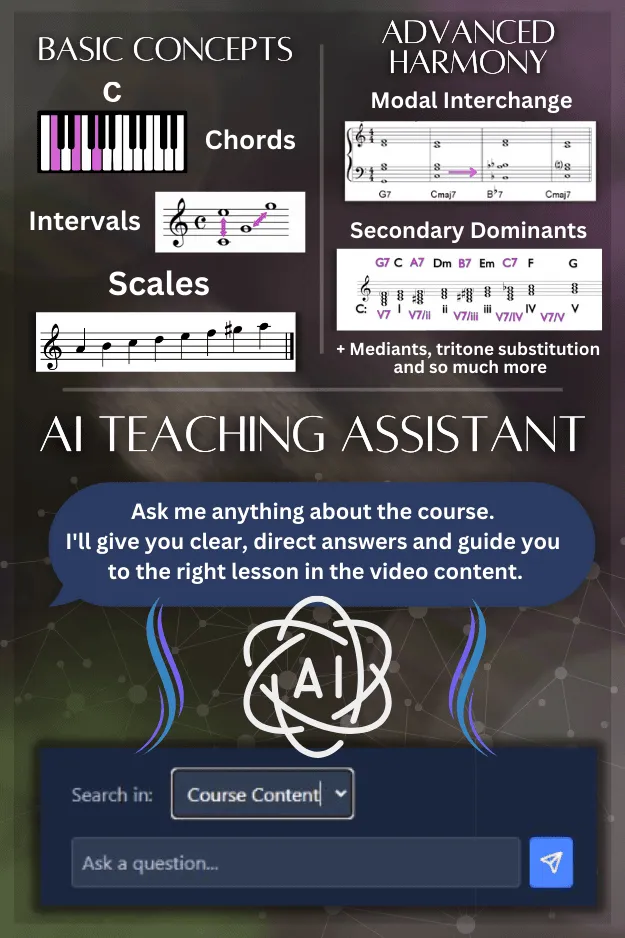
By the end of this journey, you'll have mastered the harmonic techniques used in today's best film scores—ready to craft those powerful emotional moments that directors love, audiences remember, and most importantly, that express YOUR unique voice as a composer.
WHAT RESOURCES WILL YOU LEARN
1) Colorful Orchestral Tension
-
Tritone-Stacked Dominants
- Inject unresolved dissonance into high-energy sequences.
- Perfect for building that “something’s about to go wrong” vibe.
-
Layered #11 Voicings
- A major chord… plus a suspiciously raised 4th?
- Great for scenes that straddle hope and tension simultaneously.
-
Phrygian Minor Swaps
- Slip a bII into an otherwise normal progression.
- Audiences sense a subtle “uh-oh” the moment it appears.
-
Diminished Linking Chords
- Rapid-fire tension chords bridging seemingly unrelated keys.
- Think horror or dramatic cutaways: “Wait, that just got intense!”
-
Pedal-Point With Chromatic Layers
- A static low note plus shifting half-step chords on top.
- Perfect for that creeping feeling of unstoppable dread.
-
Quartal Clusters in Winds
- Fourth-stacked harmony that sounds neither major nor minor.
- Evokes the ambiguous “I don’t trust this” mood.
-
Half-Diminished Suspensions
- “Almost minor,” but always biting with unresolved intervals.
- Use it right before a scene’s big reveal or shock moment.
2) Action & Adventure Progressions
-
Rapid II–V–I With Tritone Substitutions
- Super-charged turnarounds that keep the momentum alive.
- Great for chase scenes or battle sequences.
-
Mixolydian Modal Riffs
- A rock-solid major flavor but with a lowered 7th.
- Perfect for high-octane heroic “swagger” anthems.
-
Shifting Mediant Blocks
- Jump from I to III or VI in big, abrupt leaps.
- Audiences love that unexpected color shift—instant “whoa” factor.
-
Root-Motion By Minor Third
- Continuous “gear shifts” that feel unstoppable.
- Pile them up for that adrenaline-fueled momentum.
-
Power-5 Stacks + Added 9
- Combine simple power chords with an extra 9 to stand out.
- A staple in modern film scores that want both raw force and a bit of sophistication.
-
Extended Dominants for Key-Hopping
- Chain together V7 chords that leap across tonal centers.
- Rapid “changing scenery” vibe: comedic chases or multi-location action montages.
-
Syncopated Polychords
- Slam two triads together for an edgy, unstoppable push.
- Great for fight scenes that need crunchy tension under the stabs.
3) Dark & Dramatic Tools
-
Phrygian Dominant Lines
- That b2 and major 3rd combo is unbelievably tense.
- Ignite immediate “underworld” or “forbidden” undertones.
-
Octatonic (Diminished) Layers
- Perfectly symmetrical & oh-so unsettling.
- Great for shimmering strings in a haunted corridor sequence.
-
Clustered Strings at Soft Dynamics
- Subtle, creeping dissonance that’s not too loud… but hair-raising.
- The audience might not “hear” it clearly but they’ll feel it.
-
Low Piano With Stacked Minor 2nds
- “Thud… thud…” that rattles the nerves.
- Minimalistic but extremely potent in jump-scare setups.
-
Drones in Locrian “Overtones”
- Lean on the half-step from the root to b2.
- Great for “what’s behind that door?” tension.
-
Semitone Bass Creeps
- Chromatic descending bass lines that imply doom.
- Let the top harmonies pivot around them to keep it mysterious.
-
Half-Diminished Turnarounds
- The “not-quite diminished” chord that begs for resolution.
- Use in scenes where the protagonist senses unstoppable danger.
4) Magic & Wonder
-
Lydian “Glow” Chords
- Major triad + #4 shimmering overhead.
- Instantly says: “We’ve stepped into a realm of wonder.”
-
Open Fifth Pedals + Chiming Upper Extensions
- Stable bass, playful top notes.
- Perfect for mystical forests or glimmering magical objects.
-
Minor-Into-Maj6 Dream Shift
- A subtle addition of a 6th can feel otherworldly.
- Great for illusions or illusions breaking.
-
Ascending Parallel Fourths
- Feels like climbing up a secret “fairy-ladder.”
- Delicate, pure, and oh-so “enchanted.”
-
Modal Interchange With #11
- Borrow chords from a parallel mode that highlights the #4.
- Instantly conjures a sense of “this place is special.”
-
Soft Suspensions Over Pedal Drone
- Gentle, suspended notes that never quite “land.”
- Perfect for slow, floating reveals in a fantasy realm.
-
Harplike Extended Triads
- Break a triad into an arpeggio with added 9 or 13.
- Swirling, sparkling textures reminiscent of magic.
5) Emotional Shifts & Surprises
-
Backdoor Cadences (bVII→I)
- A casual, “gospel-esque” vibe from an unexpected chord.
- Perfect for heartfelt twists.
-
Sudden Major→Minor Flip
- Keep the same root but flatten the 3rd mid-phrase.
- A heartbreak moment in one chord.
-
Chromatic Passing Chords in a Diatonic Context
- You’re in a normal key, then that chord is “off.”
- Audience: “Why am I feeling goosebumps?”
-
Minor iv in a Major Key
- The classic bittersweet pivot.
- Romantic or “I love you but can’t have you” vibes.
-
Modulating Up a Whole Step
- “Truck driver’s gear change”: pure excitement.
- Great for a final motivational push.
-
Deceptive Cadence (V→vi)
- They expect I, but get vi instead.
- “Not quite resolved”—ouch!
-
Major Chord on the bIII
- Bright chord a third above the tonic.
- Flicks the switch from gloom to sparkle instantly.
6) Epic & Heroic Sound
-
Layered 5ths + Octave Doubling
- Brass in stacked fifths, strings doubling an octave up.
- Sonic “wall of glory” for triumphant entrances.
-
III or VI as Secondary Tonic
- Quick heroic shift to the mediant.
- A grand unveiling of bigger scope.
-
Maj7 Sweeps for Nobility
- A luscious chord that suggests dignity and breadth.
- Perfect for wide-shot panoramas of the kingdom.
-
Dominant Over a Different Bass
- A big V chord anchored by a pedal a half-step away.
- Intense tension begging for heroic release.
-
Bold Tritone Fanfares
- Brass lines leaping a tritone, then resolving.
- Declares “battle is on” or “the champion arrives.”
-
Parallel Power Moves (I–bVII–bVI)
- The staple of epic rock-inspired scoring.
- Feels unstoppable, unstoppable, unstoppable…
-
Cascading IV→V→VI Surges
- Rapid successions in upper registers, possibly modulating.
- For culminating themes that soar “beyond victory.”
7) Quiet Intimacy & Poignancy
-
Bare Triads With No Third
- Floating between major/minor—like a secret withheld.
- Listeners fill in the emotional blanks themselves.
-
Gentle Add9 Chords on Soft Piano
- Non-threatening extra note that adds longing.
- Perfect for tearful confessions or silent heartbreak.
-
Descending Bass With a Held Top Note
- “Lament bass” in a subtle, personal register.
- A gentle pull of sorrow or regret.
-
Minor iv at Slow Tempo
- An intimate color shift that tugs at the heart.
- Ideal for flashbacks or tender apologies.
-
Violin Harmonics on 2-Chord Loop
- Ethereal texture over a calm progression.
- Reflection, quiet acceptance, or final goodbyes.
-
Soft bVI Variation
- In a major key, gently pivot to that chord for “wistful.”
- “It could have been…” lingering vibe.
-
Held Cluster in the High Range
- Slight dissonance that never fully resolves.
- Symbolizes uncertain hope or bittersweet tension.
8) Experimental & Modern Approaches
-
Polychord Layers
- Two triads from different keys stacked vertically.
- A swirling, “is this even tonal?” sensation.
-
Bitonal Strings vs. Atonal Woodwinds
- Contrasting harmonic universes at once.
- Ideal for dream states or psychological conflict.
-
Tension-Swell “Unresolved” Cadences
- Start a V chord, fade out before resolution.
- Leaves watchers uneasy and wanting more.
-
Pivot Chords in Hyper-Short Loops
- 2-chord loops that morph from major to diminished.
- Like stepping into a sonic kaleidoscope.
-
add4 and add2 Combined
- A chord that’s neither suspended nor resolved—just hanging.
- Perfect device for “time is warping.”
-
Resonant “Overtone” Clusters
- High partials ring out in a reverb-heavy space.
- Conveys “beyond normal reality” more than typical chords.
-
Randomized Voicing Inversions
- Each pass shifts chord inversions unpredictably.
- Keeps the viewer from settling—great for cerebral sci-fi or modern art flicks.
Two Ways to Approach These Resources
Option 1: Deep Learning Path
Watch the course videos sequentially, take detailed notes, and practice each concept thoroughly. This approach builds a solid foundation and deep understanding of modern harmony.
(Perfect when you have time to dive deep and master each concept)
Option 2: AI-Powered Quick Access
Use our AI assistant to instantly find any technique listed above. It'll explain the concept and direct you to the exact video timestamp where it's taught in detail.
(Ideal when you're composing and need immediate answers or specific techniques)
Summary:
- Sequential Learning – When you have time to master everything step by step
- AI Assistant – When you need fast access to specific techniques while composing
FROM THE MOST BASIC CONCEPTS...
In this course you’ll learn from the most foundational and
basic concepts like this one:
HOW TO USE AND BUILD MAJOR, MINOR
AND DIMINISHED TRIADS
...TO MORE MEDIUM/ADVANCED TECHNIQUES...
HOW TO USE MIXOLYDIAN b9 & b13 TO CREATE TENSION
BEFORE LANDING ON MINOR CHORDS
HOW MODAL INTERCHANGE CAN HELP YOU
TELL A STORY WITH HARMONY
...AND VERY PRACTICAL
CINEMATIC EXAMPLES
UNDERSTANDING THE DIMINISHED SCALE AND
ITS USE IN CINEMATIC MUSIC
"Modern Harmony"
Complete Curriculum
Examples:
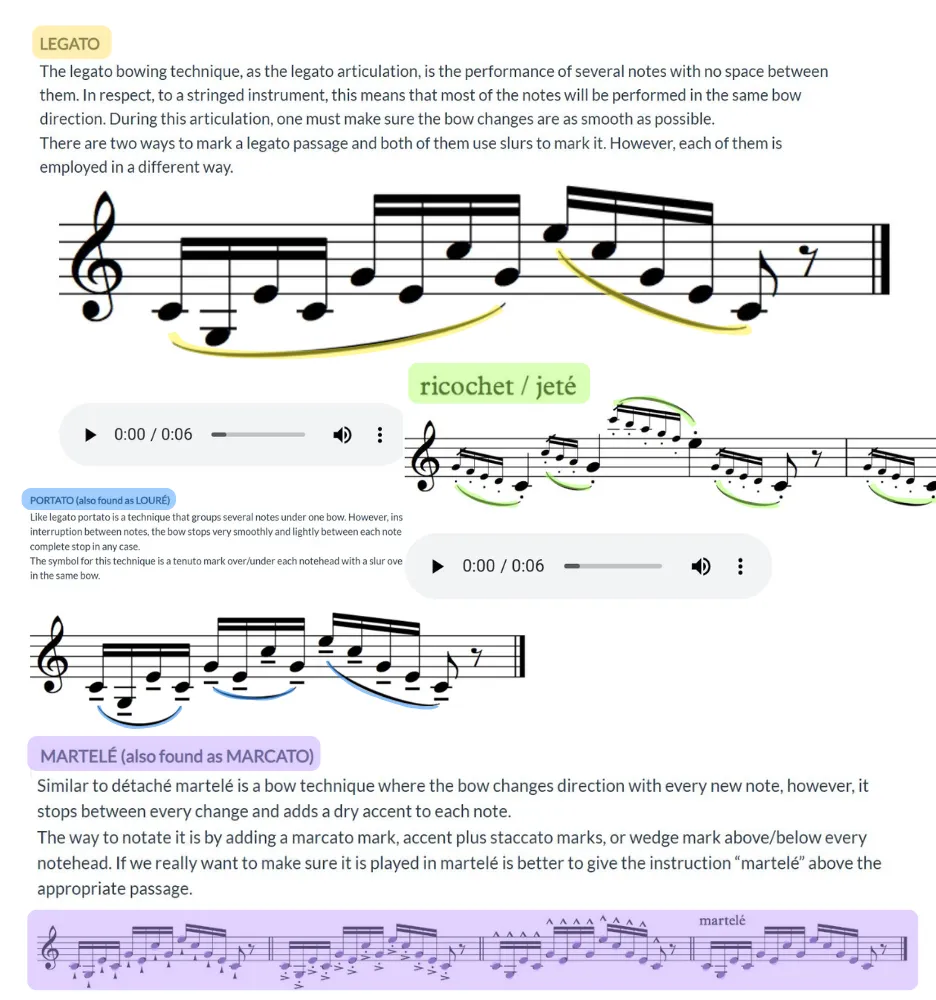
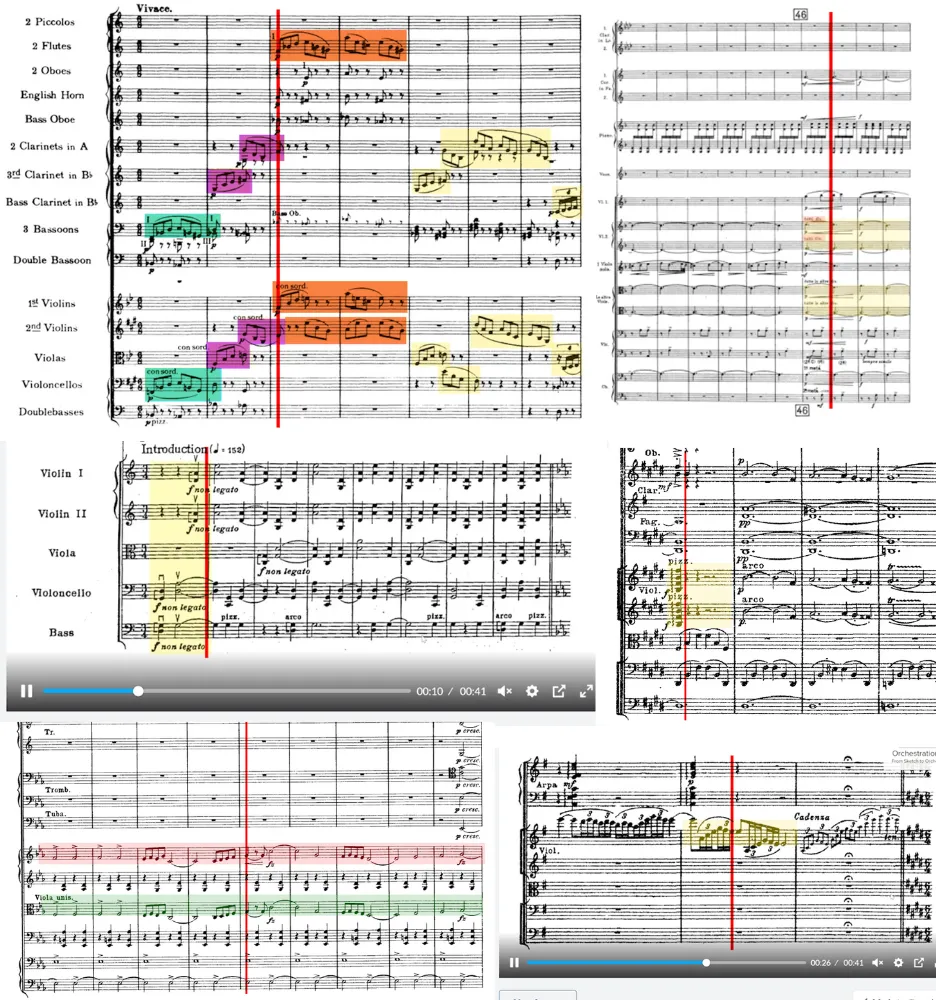
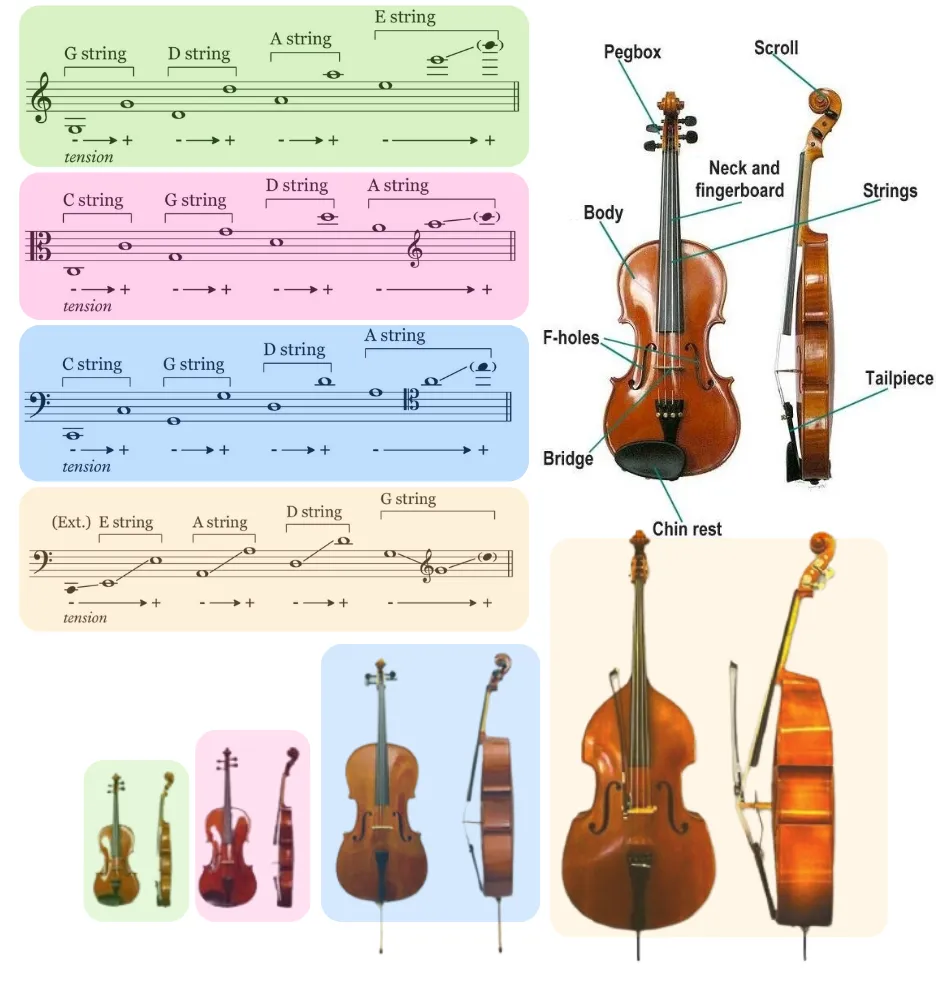
High-Impact Videos & Lessons
Each lesson has been split into bite-sized chunks so you don't get overwhelmed with a flood of information. Take the course at your own pace, and really study the lessons as you apply the actionable lessons to your business.
Group Coaching
You will have the opportunity to work through any roadblocks you encounter during our Group Coaching Meetings. These are specific times the teachers at Cinematic Composing will be available inside of a video chat room where you can jump in to have your burning questions answered. Stay for as long as you'd like to listen in on other people’s questions, or leave as soon as you have your questions answered. These often turn into impromptu lessons as I elaborate on specific topics or start digging into someone's composing career.
Private Group With Everyone In The Community
Interact with other students who are going through some of your same struggles. Everyone inside of the community will be participating in group discussions inside our group. This will be a constant source of encouragement, accountability, community, and a place where lifelong friends will be forged.
Go At Your Own Pace
You can go at your own pace. Don’t need to follow the course’s schedule.
The course materials do not expire and you’ll have access to them for life. Even for the future course updates and improvements!
The duration is 6-8 weeks approx. You can do it a bit faster, or take as much time as you want/need.
Or you could even take advantage of the discount now, and be doing the course later.
ACCESS
FOR LIFE
GO AT YOUR
OWN PACE
FREE
UPDATES
7 DAY MONEY BACK GUARANTEE
If you're not satisfied with the courses, get in touch within 7 days and we'll give you a full refund.*
*Conditions apply. Read Terms and conditions.

Peter Moore - Melbourne, Australia
Great supportive group to be a part of. Real people with real struggles and dreams. Lovin' it!

Thomas Rhea - Virginia, USA
I am only into day 2, I am so impressed! The chat/interactive video chat... and the customer service is WAY more than I thought this experience was going to be!

Steven Swartz - Los Angeles, USA
These courses have been a fantastic experience thus far. I'm already learning more than I ever could. It's far superior than just searching for online tuts. This course is all a hit!.

Medhat Hanbali - Toronto, Canada
Whether it’s a film, TV show, video game or music production, the information you will learn in this class is very valuable and will be useful for the rest of your career.
WEEKLY LIVE CLASSES
PRIVATE COACHING COMMUNITY
PERSONAL MENTOR

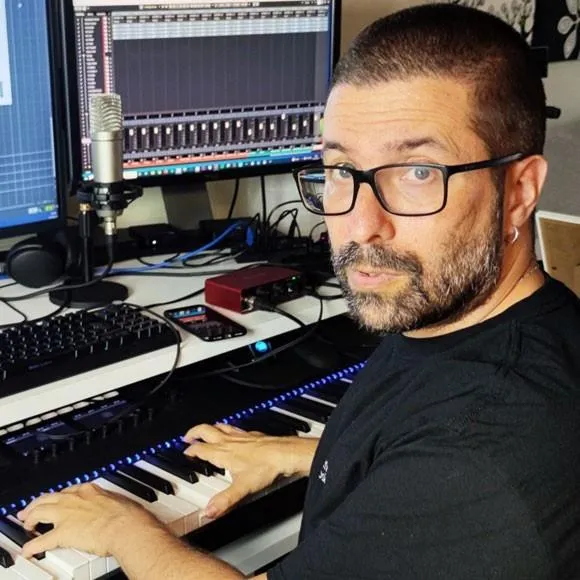
Tony Domenech
More than 20 years teaching experience
Specializes in film scoring harmony
Developer of Modern Harmony curriculum at Cinematic Composing, used by 6,000+ students
YouTube channel with 100,000+ subscribers focused on harmony for media composers
WHAT DO OUR STUDENTS SAY?
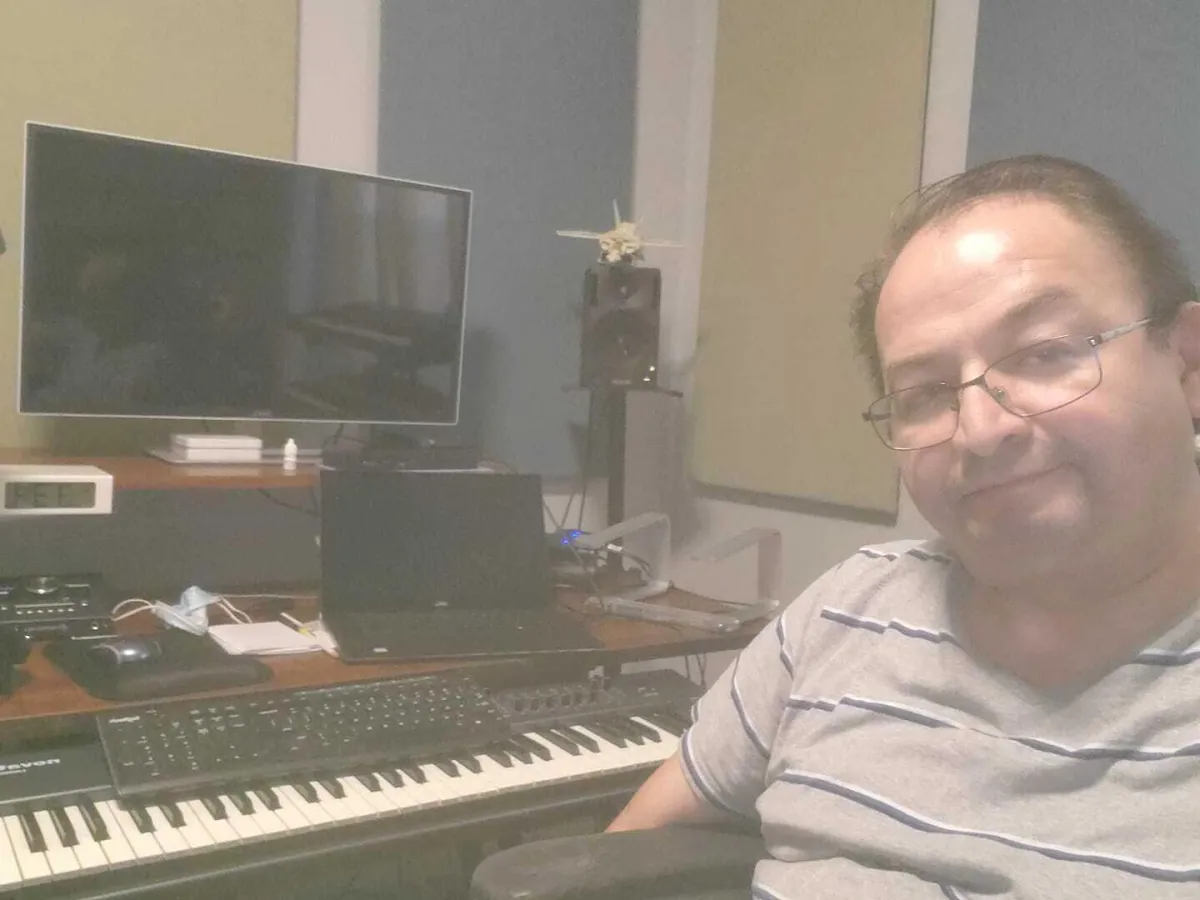
Nelson Sandoval
I've been quite impressed with the amount of knowledge and experience shared by Mark in his course.... He has truly mastered his process and he invites us to learn and read the benefits of his experience. I highly recommend Cinematic Composing to anyone who wants to get busy making orchestral music! ❤

Umberto Pisano
Explanations and videos are clear and to the point, and Mark is a great teacher and mentor.Great job guys! I would really recommend this course!
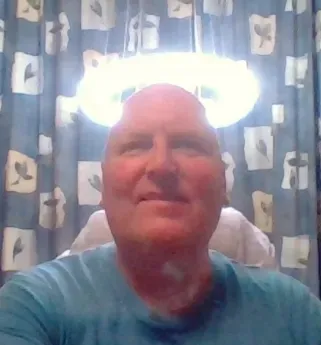
Josef Lindlbauer
Really amazing stuff for beginners. Marc takes you by the hand, and even tells you what sequencer, MIDI controllers and audio equipment best to use. Thank you Marc for putting this out!

Francesco Menici
The course is very interesting, detailed and professional! The lessons are very well structured and useful for both professionals and beginners. Marc Jovani conveys great enthusiasm and helps to achieve your goal. THANK YOU MARC!!! THANK YOU CINEMATIC COMPOSING!!

Sarvar Kaziev
I’ve learned a lot in such a short time.. It is easy to follow our great instructor Marc Jovani. He has a great experience and makes it possible for us to follow him into the magical world of composition. To my knowledge it’s one of the best remote courses out there.live classes

David Ramos Martel
On the road to orchestral composition using virtual instruments, this is the best online course I found. It is clear, concise, and practical. Of course, highly recommended.
"STRINGS: INSTRUMENTATION & ORCHESTRATION"
Complete Curriculum
STRINGS - INSTRUMENTATION
INTRODUCTION
• What makes strings the foundation of the orchestra
• The evolution from Renaissance to modern string writing
• Understanding basic string mechanics
• How strings create their unique sound
THE STRING SECTION
• Why strings can play longer than any other section
• The secret behind string section homogeneity
• How string instruments work together
• Understanding section hierarchy
THE INSTRUMENTS: THE VIOLIN
• What makes the violin the leader
• The four-string system demystified
• Range and power secrets
• Traditional vs contemporary roles
THE INSTRUMENTS: THE VIOLIN - EXAMPLE PART 1
• Analyzed Score: Rimsky-Korsakov's Scheherazade → Solo violin virtuosity
THE INSTRUMENTS: THE VIOLIN - EXAMPLE PART 2
• Analyzed Score: Elgar's Variations on an Original Theme → Section writing
THE INSTRUMENTS: THE VIOLIN - EXAMPLE PART 3
• Analyzed Score: Rimsky-Korsakov's Scheherazade → Two-section writing
THE INSTRUMENTS: THE VIOLA
• Why the viola has a unique timbre
• The mysteries of middle register writing
• Alto voice capabilities
• Breaking viola stereotypes
THE INSTRUMENTS: THE CELLO PART 1
• Understanding cello versatility
• The power of tenor register
• Technical possibilities
• Role evolution through history
THE INSTRUMENTS: THE CELLO PART 2
• Analyzed Score: Shostakovich Symphony No. 15, II movement → Section solo writing
• Analyzed Score: Brahms Symphony No. 2, II movement → Melodic treatment
THE INSTRUMENTS: THE CONTRABASS PART 1
• The foundation mysteries
• Fourth-tuning system explained
• Power vs clarity challenges
• Breaking bass line traditions
THE INSTRUMENTS: THE CONTRABASS PART 2
• Analyzed Score: Prokofiev's Lieutenant Kijé Suite → Solo capabilities
• Analyzed Score: Beethoven's Symphony No. 9, II movement → Section writing
LEFT HAND: THE STRINGS
• The physics of string vibration
• Understanding finger pressure
• Sound production secrets
• Resonance principles
OPEN STRINGS
• Analyzed Score: Copland's Rodeo → Open string techniques
• Natural resonance explained
• The magic of sympathetic vibrations
• Key relationships revealed
DOUBLE, TRIPLE AND QUADRUPLE STOPS
• Multiple note possibilities
• Understanding physical limitations
• Sound production challenges
• Bridge curvature effects
DOUBLE STOPS
• Analyzed Score: Brahms Violin Concerto → Double stop mastery
• Understanding comfortable intervals
• Position change effects
• Common patterns revealed
TRIPLE AND QUADRUPLE STOPS
• Analyzed Score: Bach's Partita No. 2 → Chordal writing
• The bridge curve secret
• Sound production mechanics
• Writing effective progressions
HARMONICS
• Natural vs artificial mysteries
• The overtone series explained
• Position and node relationships
• Modern notation practices
RIGHT HAND: THE BOW
• Understanding bow construction
• The physics of bow movement
• Hair tension principles
• Sound production mechanics
RIGHT HAND: DOWN AND UP BOW
• Direction effects on sound
• Understanding natural accents
• The gravity principle
• Bow distribution secrets
RIGHT HAND: BOW TECHNIQUES
• On vs off string mysteries
• Understanding bow placement
• Contact point effects
• Advanced technique principles
RIGHT HAND: ON THE STRING BOW TECHNIQUES
• LEGATO
• PORTATO (LOURÉ)
• DÉTACHÉ
• STACCATO
• SLURRED STACCATO
• MARTELÉ (MARCATO)
• TREMOLO
RIGHT HAND: OFF THE STRING TECHNIQUES
• SPICCATO
• RICOCHET (JETÉ)
• Understanding bounce control
• Advanced application principles
RIGHT HAND: TECHNIQUES DEPENDING ON THE PLACE ON THE STRING
• SUL PONTICELLO
• SUL TASTO (FLAUTANDO)
• Understanding timbre changes
• Modern applications
RIGHT HAND: OTHER TECHNIQUES
• PIZZICATO variations
• COL LEGNO effects
• CON SORDINO applications
• Special effect combinations
SUBDIVISIONS PART 1
• Understanding TUTTI writing
• DIVISI principles
• Section balance secrets
• Player distribution techniques
SUBDIVISION (EXTREME TYPE OF DIVISI) PART 2
• Analyzed Score: R. Strauss's Also sprach Zarathustra → Complex divisi
• Multiple voice distribution
• Balance challenges
• Modern applications
SUBDIVISION (SOLO) PART 3
• Analyzed Score: Falla's El amor brujo → Solo writing techniques
• Understanding solo vs tutti
• Balance principles
• Role distribution
SUBDIVISION PART 4
• Analyzed Score: Gershwin's An American in Paris → Multiple soli
• Analyzed Score: Sibelius's En Saga → Section interaction
• Understanding soli writing
• Balance techniques
• Modern applications
CONCLUSION
• Historical perspective synthesis
• Technical possibilities overview
• Modern writing applications
• Future exploration paths
STRINGS - ORCHESTRATION
INTRODUCTION
• The hidden power behind orchestral string writing
• A journey from Renaissance to modern string techniques
• The fascinating relationship between physics and strings
• The orchestrator's secret toolkit revealed
THE INFLUENCE OF THE HARMONIC SERIES
• The acoustic phenomenon shaping modern orchestration
• Decoding complex waveforms in music
• Brain processing mysteries in sound perception
• Natural laws behind musical preferences
PARTIALS, OVERTONES AND HARMONICS
• Inside the anatomy of sound
• The mathematics of musical beauty
• Sound source identification secrets
• Frequency relationships unveiled
THE HARMONIC SERIES AND HOW IT AFFECTS ORCHESTRATION
• Nature's blueprint for orchestration
• Cultural preferences in sound organization
• The mathematics behind musical choices
• Register mysteries explained
THE STRING SECTION
• The orchestra's most versatile family
• Five centuries of evolutionary development
• Understanding sectional dynamics
• Modern applications revealed
THE STRING SECTION: THE FUNCTIONS
• The chameleon of the orchestra explained
• Historical role evolution
• Technical capabilities unveiled
• Modern functional assignments
PERFORMING MELODIES
• Analyzed Score: Haydn Symphony 104 → Melodic distribution
• Analyzed Score: Brahms Symphony 4 → First movement treatment
• Analyzed Score: Mahler Symphony 2 → Modern approaches
PERFORMING COUNTERPOINT
• Analyzed Score: Tchaikovsky Symphony 6 → Counterpoint techniques
• Dynamic layering secrets
• Independent section writing
• Balance solutions revealed
PERFORMING HOMOPHONIC TEXTURES
• Analyzed Score: Tchaikovsky Symphony 5 → Textural writing
• Sustained sound capabilities
• Dynamic control principles
• Support role techniques
PERFORMING RUNS
• Analyzed Score: Mahler Symphony 1 → Scale techniques
• Analyzed Score: Stravinsky's Petrushka → Modern approaches
• Sectional distribution strategies
• Technical limitations revealed
PERFORMING PATTERNS OF ACCOMPANIMENT
• Analyzed Score: Dvorak Symphony 9 → Accompaniment patterns
• Analyzed Score: Tchaikovsky Symphony 4 → Slow patterns
• Analyzed Score: Mahler Symphony 1 → Medium activity
• Analyzed Score: Holst's Mars → High intensity
• Analyzed Score: Sibelius's En Saga → Advanced patterns
DOUBLING OTHER SECTIONS
• Analyzed Score: Holst's Mercury → String-woodwind combinations
• Analyzed Score: Holst's Mars → String-brass relationships
• Balance principles revealed
• Dynamic considerations explained
COMBINATIONS WITHIN THE STRING SECTION
• Analyzed Score: Brahms Symphony 2 → Section combinations
• Traditional role distribution
• Modern mixing techniques
• Effective pairing strategies
VOICING FOR STRINGS
• The science of string spacing
• Open vs closed positions
• Register distribution secrets
• Natural resonance principles
VOICING FOR STRINGS: SAMPLES AND PIANO SKETCHES
• Mock-up to live orchestra translation
• Virtual instrument considerations
• Common pitfalls revealed
• Professional solutions explained
CONCLUSION
• Historical perspective synthesis
• Technical possibilities overview
• Modern writing applications
• Future exploration paths
BONUS #1 - LIVE CLASSES
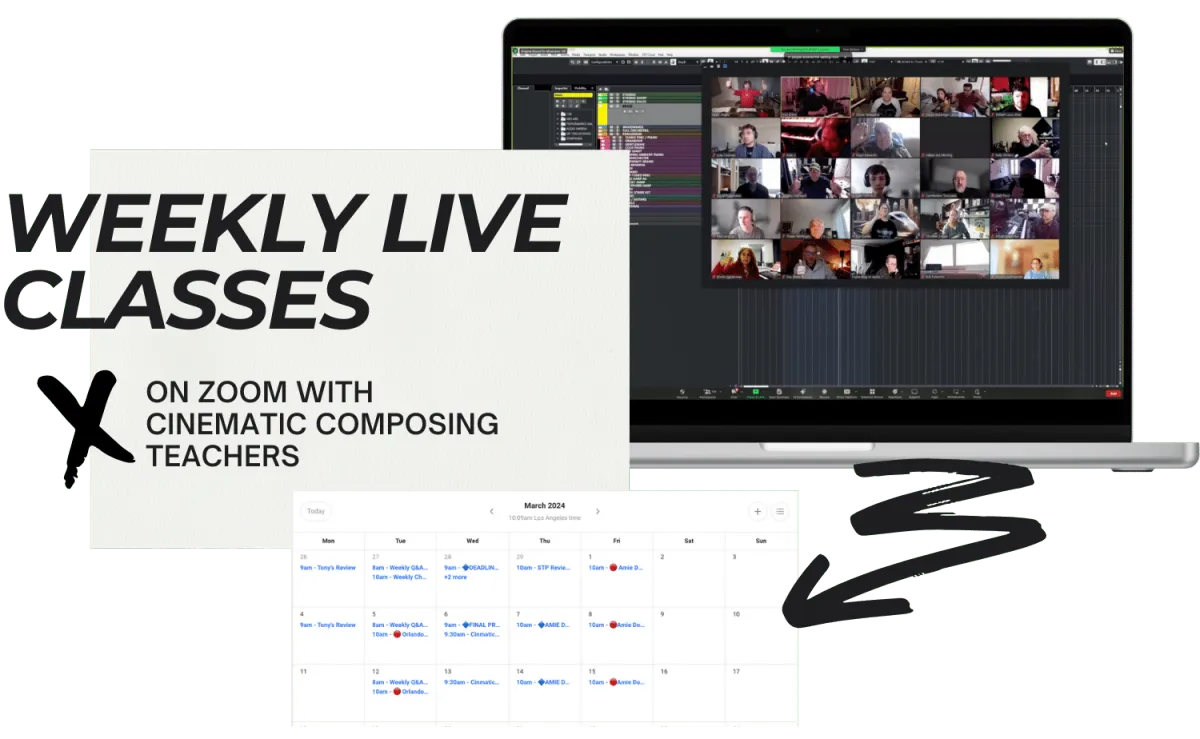
When you buy the course, you'll join the Cinematic Composing community. In this group, we do live classes and masterclasses with Cinematic Composing teachers and Hollywood Composers. You'll have access to these live classes for life.

OUR WORLD WIDE COMMUNITY
A community of more than 15,000 composers like you.
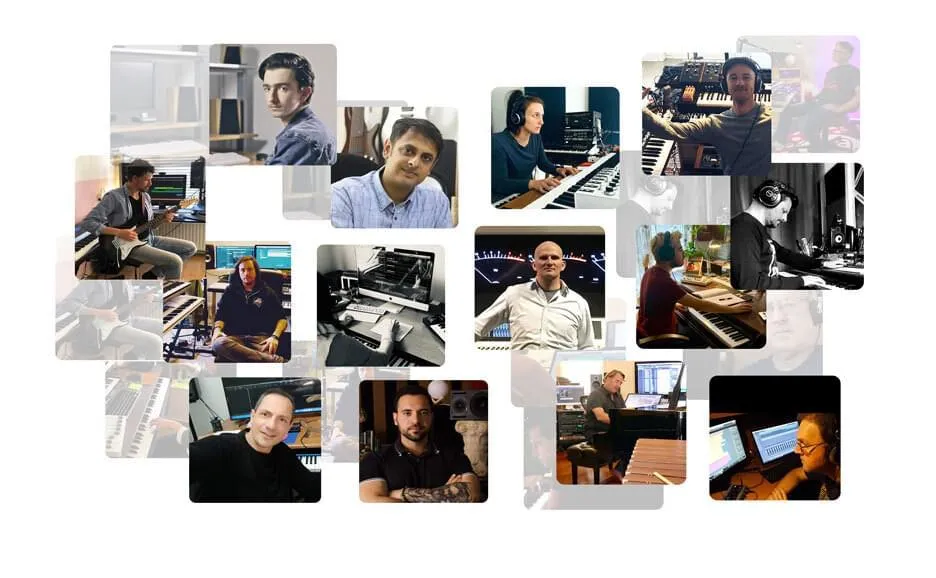
One of the biggest perks of a traditional music school is networking with other talented composers. That's why we've created a private group — inside your membership area — designated for members to collaborate, share work, give/receive feedback, ask questions, share articles, and learn and grow together.
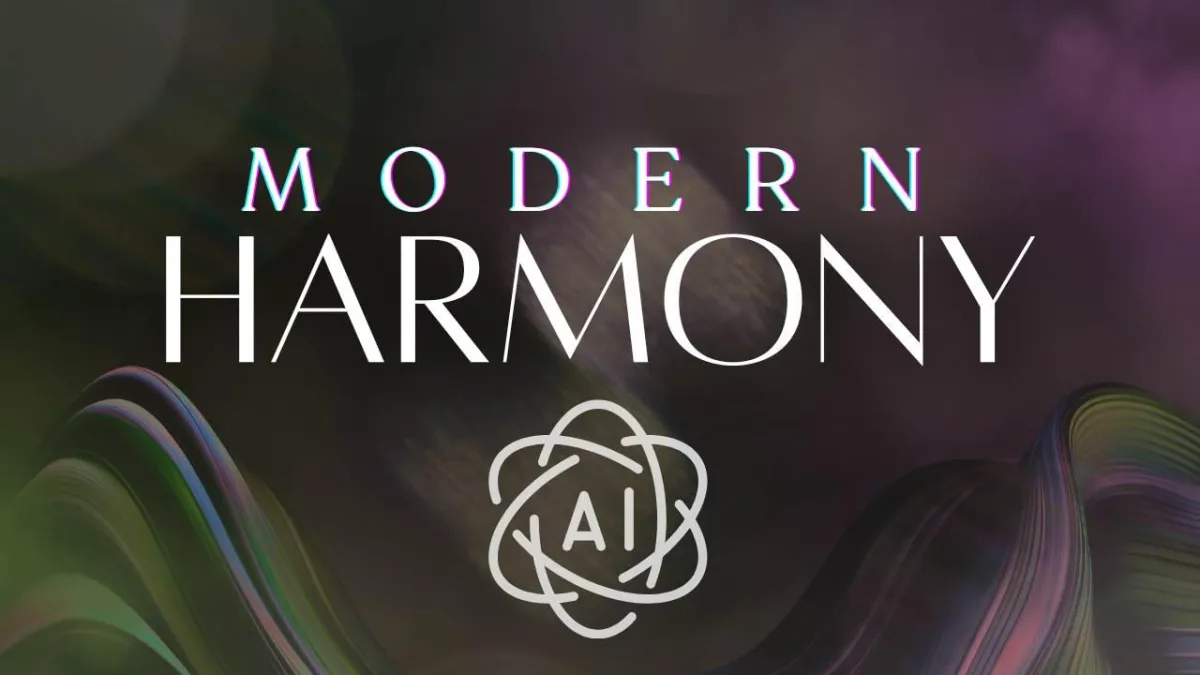
Our Commitment to You
• You’re not alone.
• Teachers to support you.
• A community of more than 15,000 composers like you that had the same struggles you're having now and that are eager to help out.
• Weekly live video chats where you can participate and ask questions.
• Periodic masterclasses with actively working composers, orchestrators, and mixing engineers.
• Go at your own pace. The teachers will always be there to support you.
• Access for life.

Cinematic Composing, LLC is not associated with Facebook or Facebook, Inc.
FOR SUPPORT ISSUES OR QUESTIONS, PLEASE EMAIL US AT [email protected]
Copyright © 2025• Cinematic Composing • A Cinematic Composing LLC Brand • All Rights Reserved • Lake Forest, CA